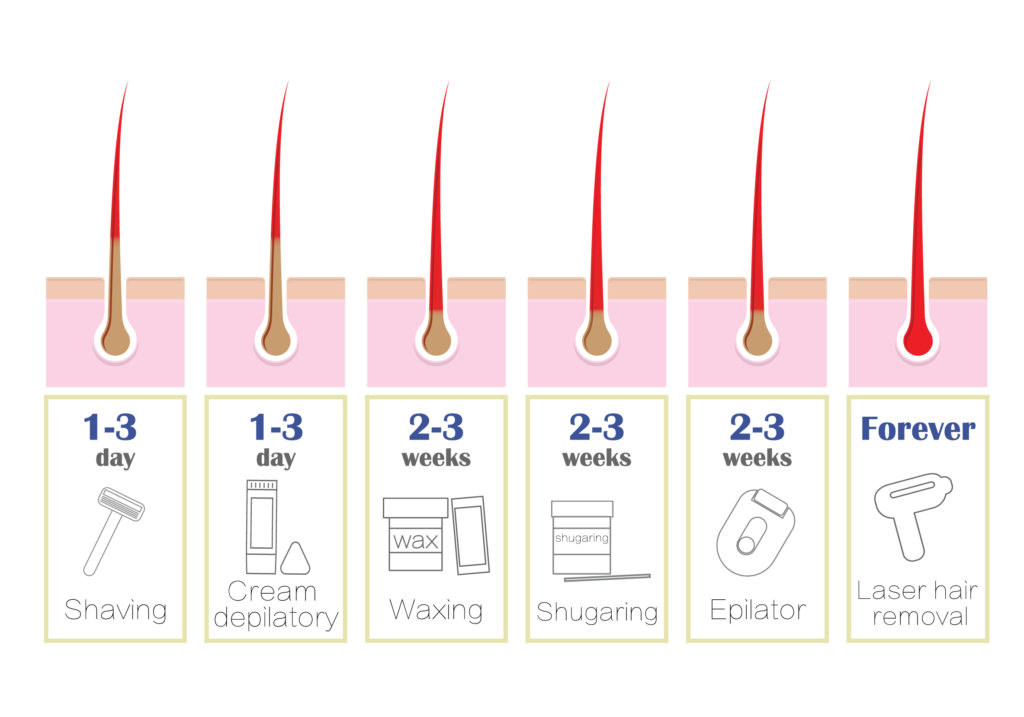The diode laser destroys the hair roots without touching the surrounding tissue.
The choice of the gun is very important, the large spots are not effective for our part, obviously it is faster and more surface in less time, we opt for a spot of max 12mm x 12mm for an efficiency 10x more effective.
The cooled head diode laser has had a worldwide reputation for 15 years of being the most effective machine in permanent hair removal.
To understand how it works, it is important to know how a hair grows and how it can be destroyed. The hair is formed in a sort of pocket under the skin called the hair follicle. What we see coming out is just the hair shaft which is the hardened, keratinized part of this hairy tissue that grows from the follicle. Each of us has a different hair growth rate that depends on age, weight, metabolism, hormones, medications and ethnicity. Apart from these differences, each hair goes through three phases of development

How do hairs grow?
Active phase or anagen phase: 85% of our hair is in this phase. During this phase, there is pigmentation or melanin around the root.
Regressive or catagen phase: a period of 2 weeks where the hairs stop growing but are not yet detached. About 4% of the hair is in this phase.
Rest phase or telogen phase: period of 6 weeks, after which the hair falls, and a new hair is formed. Approximately 1-13% of our hair is in this phase at any given time
The laser acts on the pigmentation (melanin) of the hair and is most effective in the anagen phase. Since the pigment must be present to absorb the laser radiation, it is not possible to treat light hair. Not all hairs are simultaneously affected by this phase. It is therefore necessary to follow several sessions before you can talk about full hair removal.
The number of sessions depends on the area of skin to be treated and the number of hairs in the rest phase. When the hairs enter the active phase again, additional sessions are required.
The laser emits a highly concentrated light beam with high energy value and at an ideal and specific wavelength (800 nm). This light ray comes into contact with the skin for a fraction of a second. Most of the energy from the laser beam is absorbed by the pigment that surrounds the hairline. The cells of the hair bulb are then heated and destroyed selectively.
Three to seven days after treatment, you may have the impression that the hairs are growing back. However, the majority of them have been treated and are starting to fall. Between sessions, it is not recommended to wax. However, you can shave the treated areas or apply a depilatory cream. Before and during treatment, sunbed sessions are absolutely prohibited. We will also avoid exposure to the sun outside or on the beach, and only for the area to be treated.
